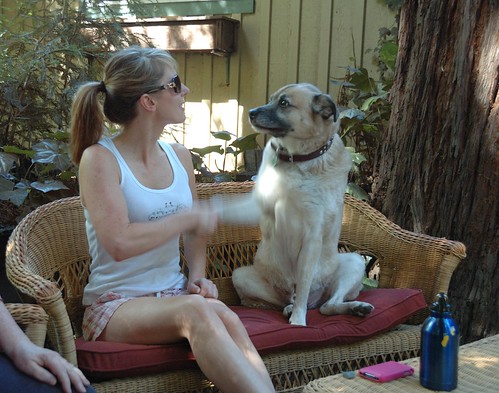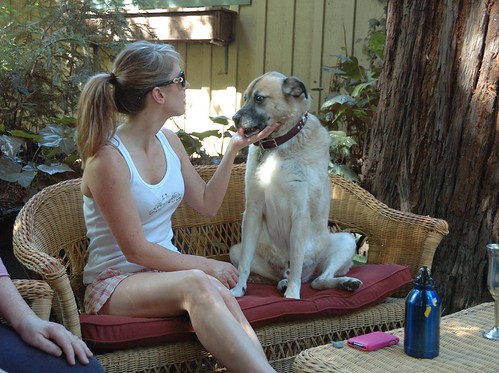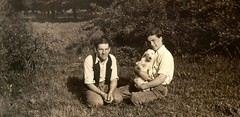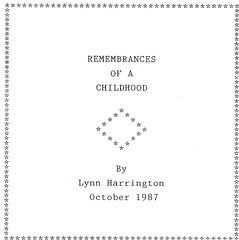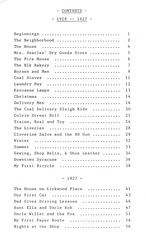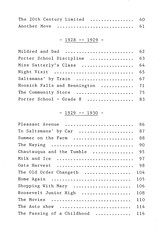[Update, July 24:
As Brian notes in the comments, today's action by the State legislature has spared most of the California state parks from closure, if that ever was a serious possibility. Some State parks will almost certainly close, but lists I've seen of the ones on the Governor's plate of possibilities include only those that actually could be physically closed: museums, historical homes, and mines, for example. So it seems that "Kelsey's Park" -- our local Henry Cowell Redwoods -- is likely to remain available to him for at least a while longer.
Now I can get back to the business of worrying about my colleagues' jobs, my students' welfare, my community's ability to function, and the intelligence of my State's leaders.]
As Brian notes in the comments, today's action by the State legislature has spared most of the California state parks from closure, if that ever was a serious possibility. Some State parks will almost certainly close, but lists I've seen of the ones on the Governor's plate of possibilities include only those that actually could be physically closed: museums, historical homes, and mines, for example. So it seems that "Kelsey's Park" -- our local Henry Cowell Redwoods -- is likely to remain available to him for at least a while longer.
Now I can get back to the business of worrying about my colleagues' jobs, my students' welfare, my community's ability to function, and the intelligence of my State's leaders.]
=========================================
California isn't just broke, it's broken.
The state is in a state of financial collapse. The legislature and the governor are trying to address a deficit of staggering proportions. The numbers are numbing, and beggar attempts to fathom: currently, the figure is $26 billion dollars for the next year. To try to put that in perspective, it's almost twice the entire yearly expenditure on prisons, and almost half of the entire state annual spending on elementary through community college education, and one-third of its annual expenditures on health and human services. Any fix will involve massive reductions in services, and conjures up images of Dickensian despair among the poor.
Just how the State with the world's eighth-largest economy got itself into this horrid mess can be (and is) debated endlessly, but it all boils down to an initiative process which has written mandatory, large expenditures into the State constitution while also making revenue increases almost impossible. We've been heading toward this gargantuan train wreck for more than thirty years, and it's here.
My own job is in jeopardy, of course, since my salary as a community college teacher ultimately comes from the State's coffers. While the people of my local district have been very, very generous over the past few years, taxing themselves to the tune of half a billion dollars to fund capital improvements (including my incredible new planetarium), that largesse can only go to capital improvements -- it can't fund salaries. My department is in relatively good shape, since we teach huge classes... but the folks at the Titanic's stern were in relatively good shape, too, in the spring of 1912.
Since crucial state functions like education, safety, and social services are about to fall into an abyss, I almost feel guilty writing what I'm about to. But I'll write it anyway.
At last look, California is planning to close 220 of its 279 state parks. This supposedly will save, over a two-year period, about two-tenths of a billion dollars, if one doesn't factor in additional expenses that trying to keep forests and beaches "closed" will entail. Among those 220 are the three parks in our part of the Santa Cruz Mountains: Big Basin (California's first state park with an awe-inspiring stand of thousands of years old Sequoia Sempervirens), Castle Rock at the crest of the mountains, and Henry Cowell Redwoods park in Felton.
That last one is what pierces my heart like a shiv, since it is Kelsey's favorite place in the entire world.
Shortly after we rescued Kelsey from the pound in 1998, we took him for a walk in Henry Cowell park. The joy he manifested on that first visit was thrilling: he didn't walk or run, he leapt from place to place along the path. Sniffing, peeing, pooping, bouncing, grinning... it was like he had found heaven after his puppyhood of neglect. The course we took through he park -- a roughly two-mile circuit through the hardwood forest and along the banks of the San Lorenzo river -- burned itself into his brain then, and he and I have followed that course countless times since.
 A winter's walk, 2006, Henry Cowell State Park. Our friend Lucile jollies Kelsey, while Diane is tended by the spaniels.
A winter's walk, 2006, Henry Cowell State Park. Our friend Lucile jollies Kelsey, while Diane is tended by the spaniels.On most of those trips along his circuit, it has been just him and me, and we traipse it a couple of times a month. Now eleven years old, he can tell when I'm even thinking about taking him to "Kelsey's Park," and his usual dour demeanor changes to giddiness. He will remain patient in the back seat as we drive, until we go past the turn that would take us to the vet, and then he begins trembling. As we turn in to the road to the park entrance, he whines a warble that he never does at any other time, and when we get out of the car, he becomes ecstatic. For a while. Then he becomes all business, sniffing every leaf along our well-known path, marking his specific spots until both tanks are empty, and even beyond that. He wades in the river for about a minute along the way, pauses respectfully when horses pass on the horse-trail part of our circuit, and ignores, for the most part, other people and dogs. He has business to do, you know, and doggy newspapers to read on the scents of the grasses and the leaves.
If and when the park is closed, I suppose we will find other places for special times -- but, at his advanced age, he will lose something that has been an integral part of his joy forever.
And so will I.
Closure of the parks pales so much compared to other losses that will befall this State that I can't bring myself to become too active in protesting them. Many of the poorest among us are about to be handed a slow-motion death sentence, not by lethal injection but by lethal abandonment. My students, for many of whom community colleges are the last, best hope not just for them but for their families, will lose that opportunity. My co-workers will lose their jobs. How dare I worry about what effect it will have on my dog?
I don't know. You try explaining it to him here in the evening twilight of his life. I can't.










